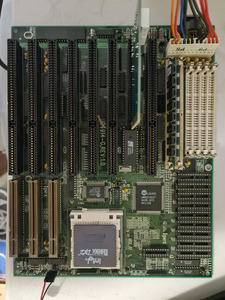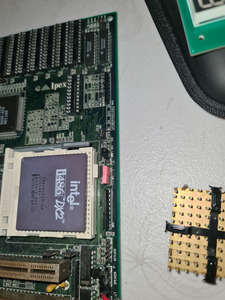First post, by vacatedboat
I recently purchased this 486 dx2 MB. After i found a jumper missing to state its a dx2 the motherboard now boots up and posts.
Anyway learning to use my handheld scop and multimeter i was checking the frequency of the 2 crystals and the clk signal on the socket 3.
So the cystal near the isa slots at back. Barrel shaped read 33mhz. The cystal in the middle of the MB read 50mhz and the socket clk read 50 mhz.
My question is why its not reading 66mhz? It boots fine. Thanks heaps

